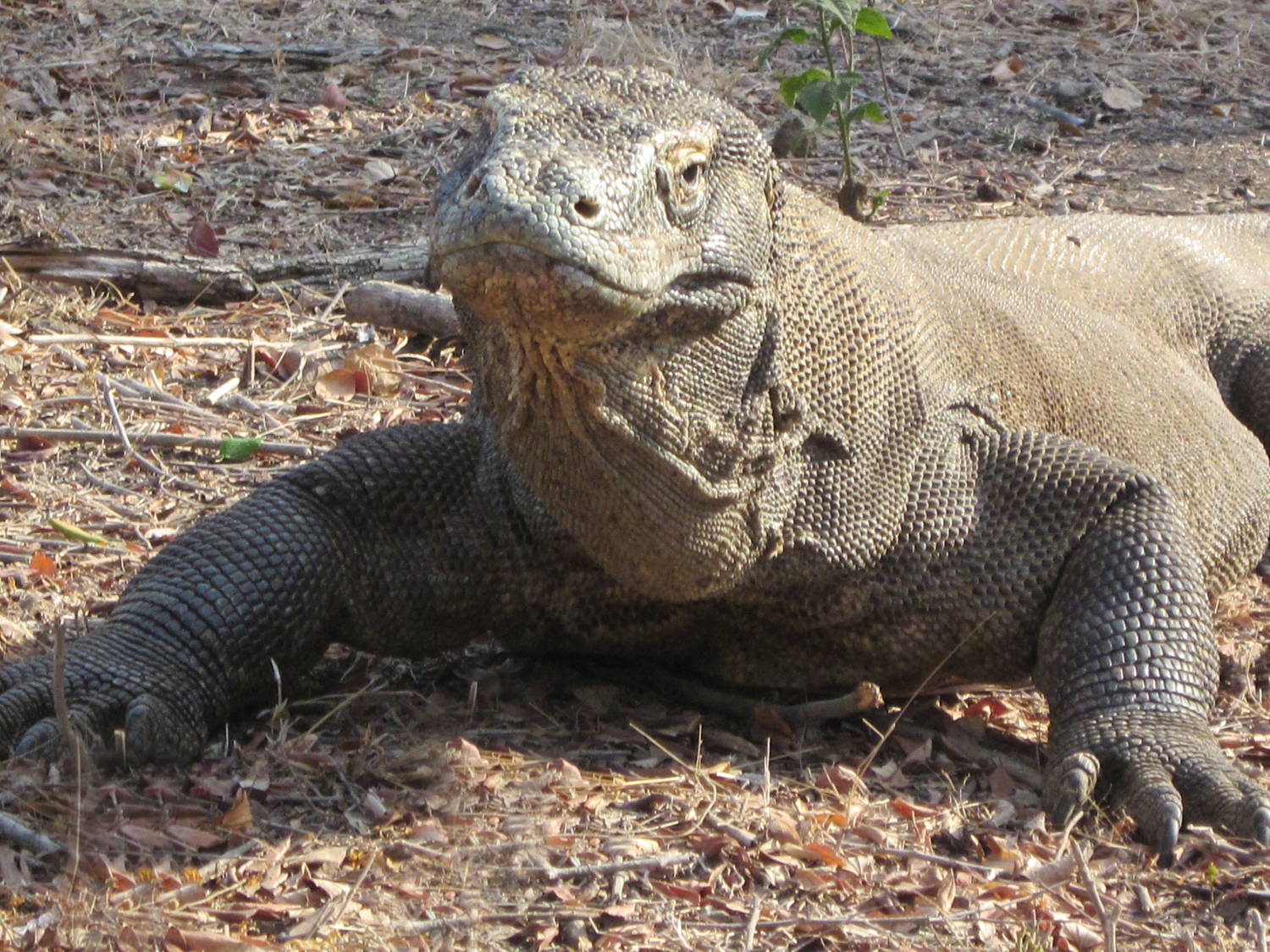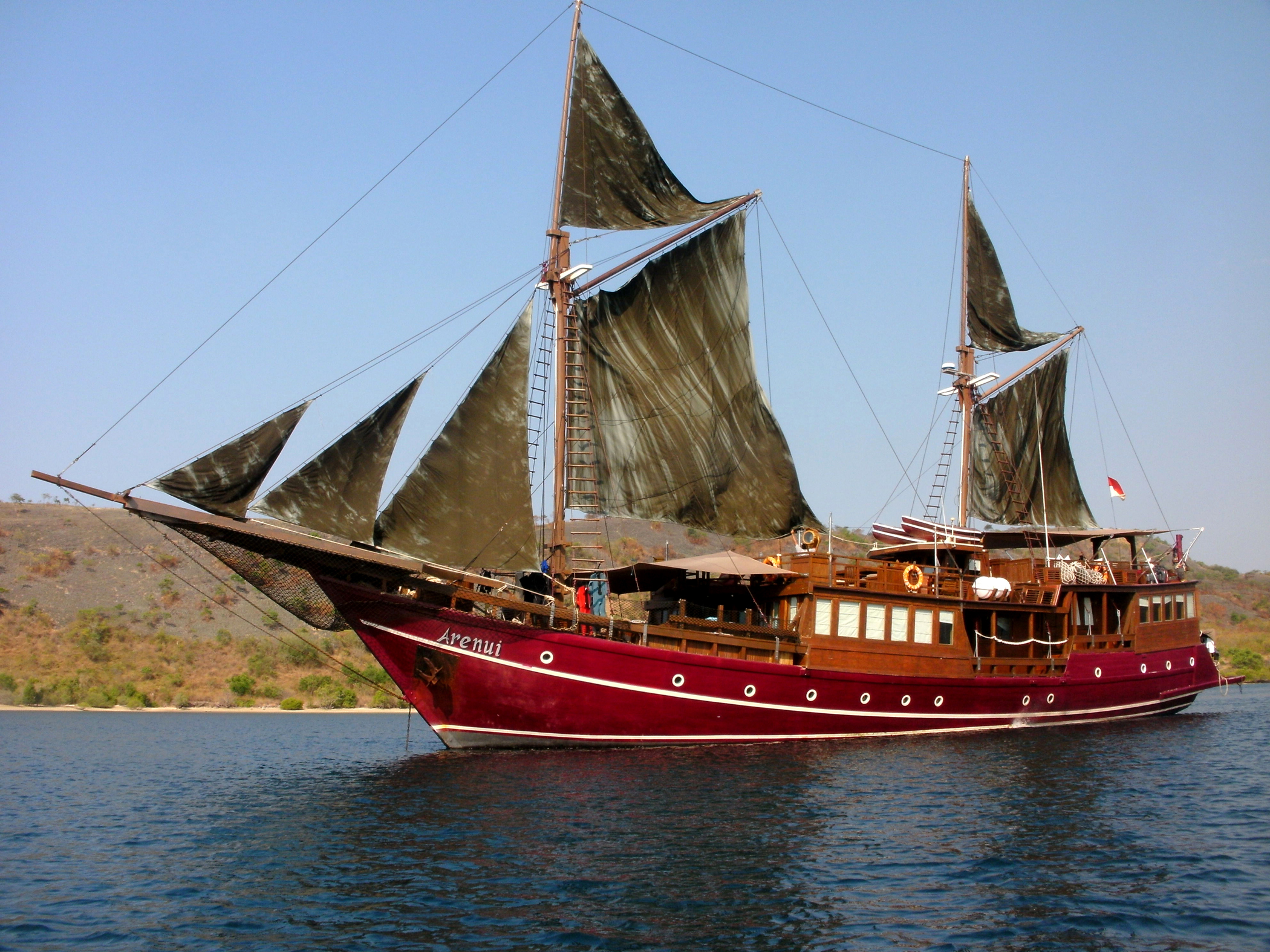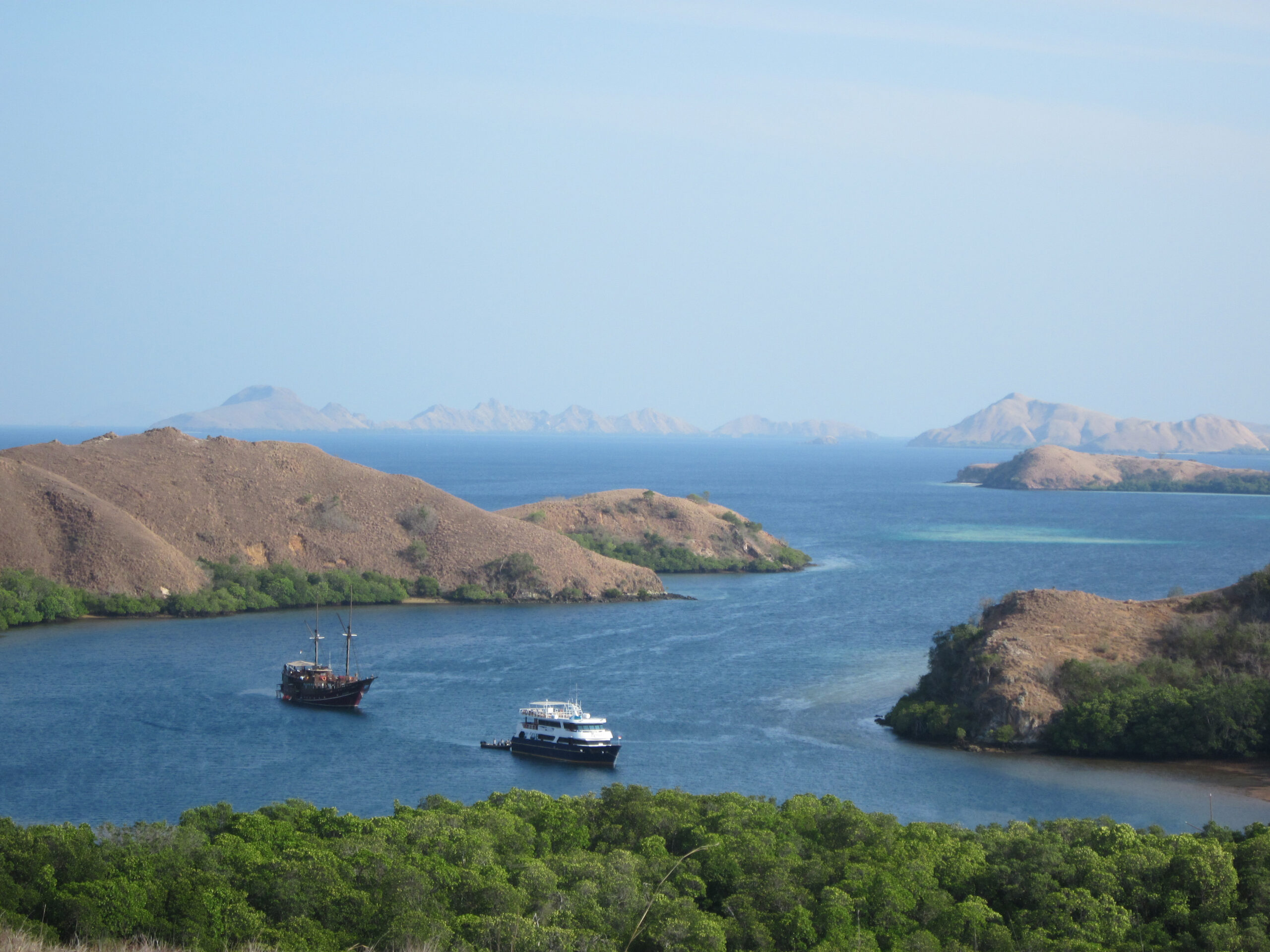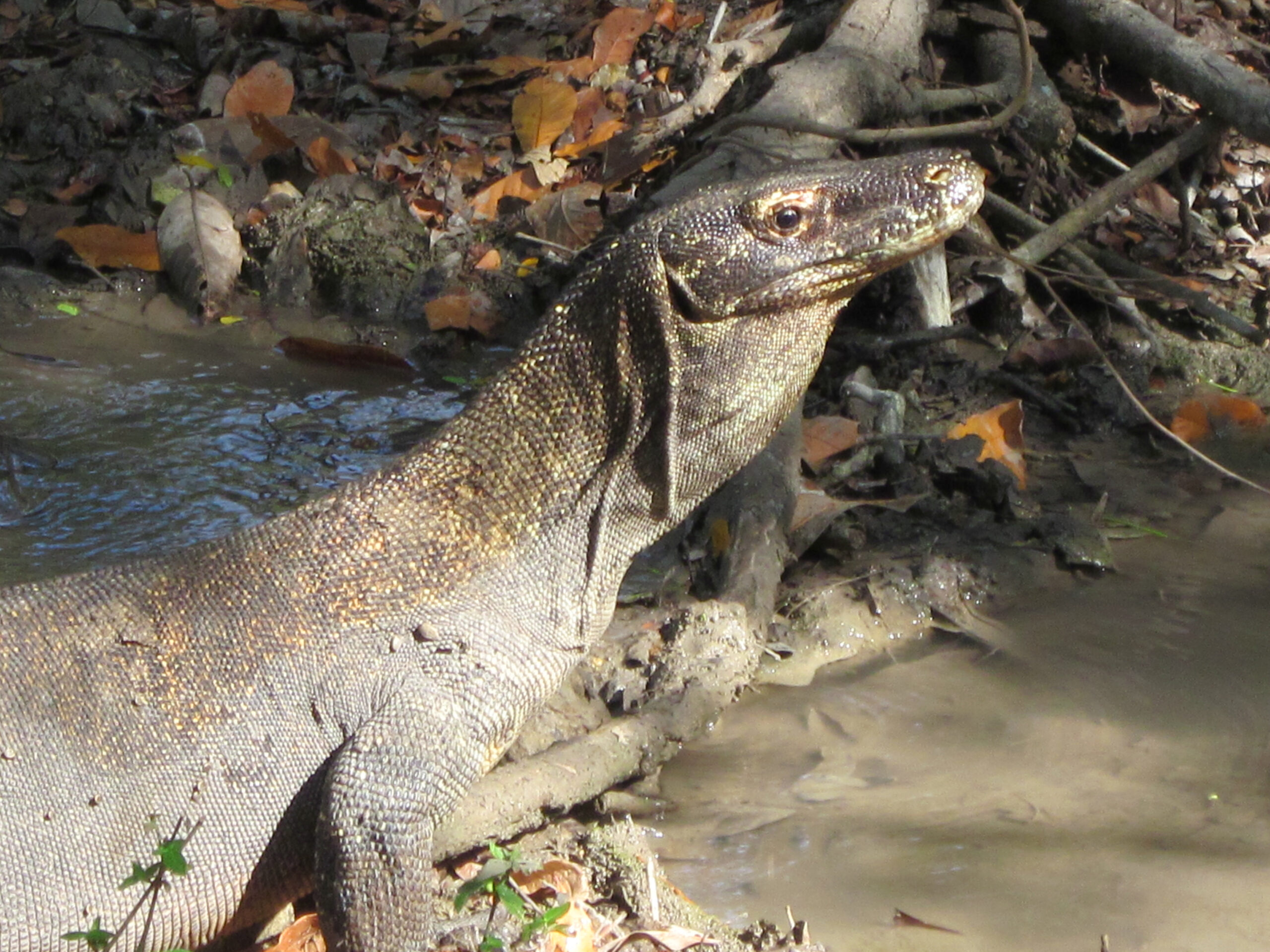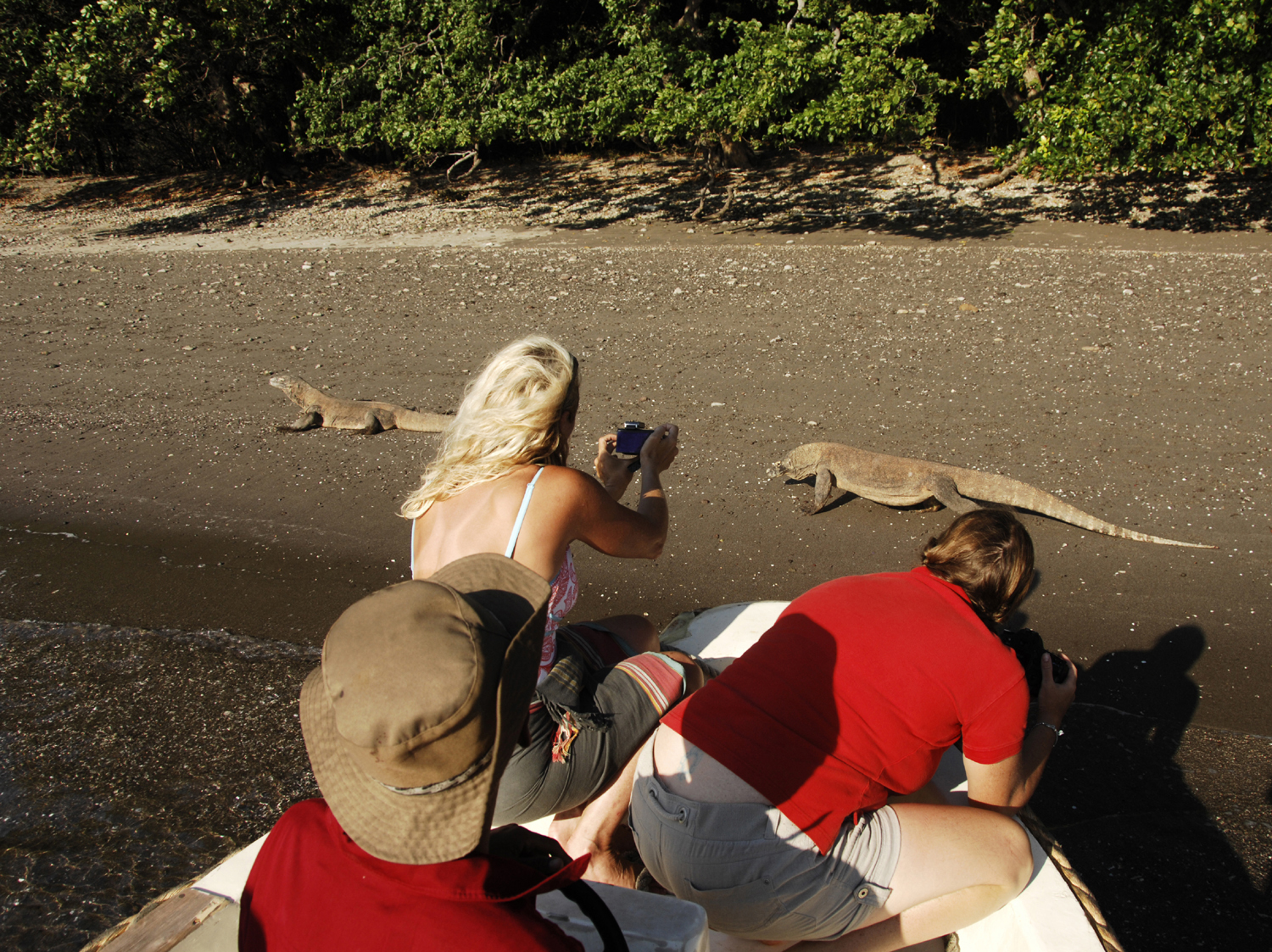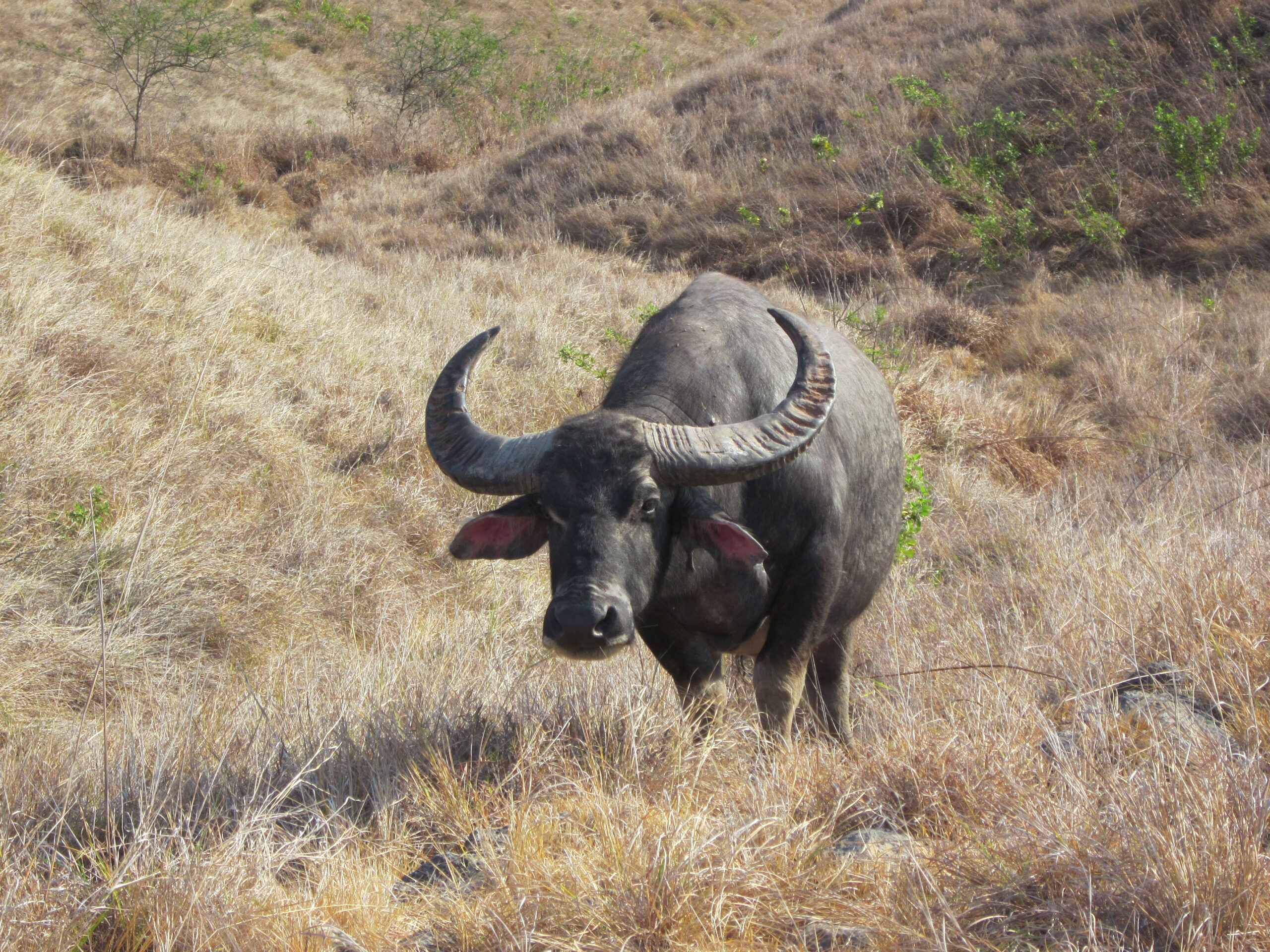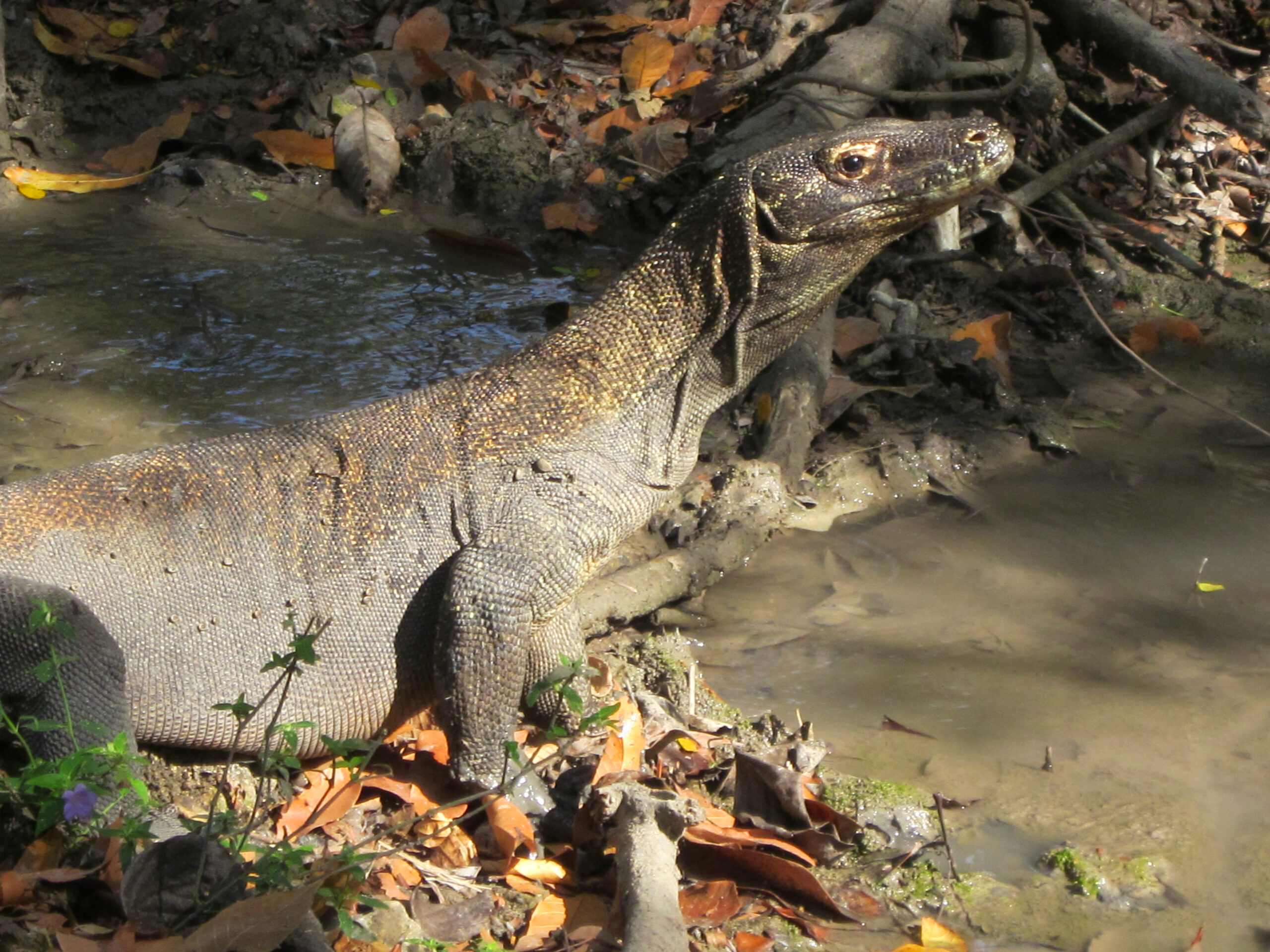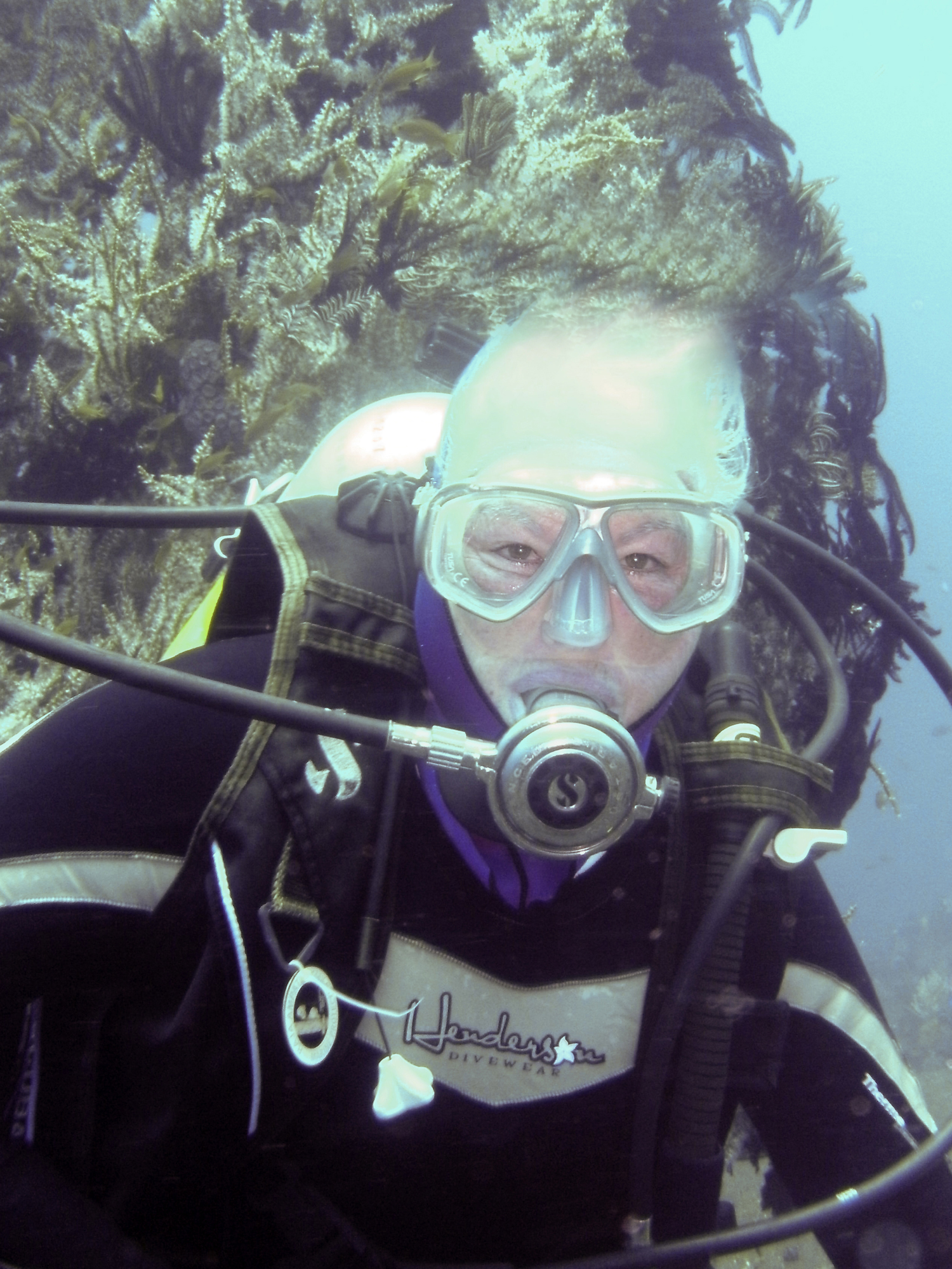Text and photos by Mary L. Peachin
Vol. 24, No. 4, January, 2021
(Note from Mary: Covid has limited my adventurous experiences so I am reprinting excerpts from my new book Sleeping Around…Challenging My Comfort Zone. Don’t miss reading it.)
It bites to kill. The Komodo dragon is the world’s largest monitor lizard. Once it gets a taste of blood it is impossible to separate it from its prey. Its toxic bacteria saliva creates an infection that slowly kills the animal. Komodo’s devour everything including the animal’s hide. The famous indigenous species are found in the 17,000-island archipelago of Indonesia.
Four days into our Arenui Indonesia Liveaboard 12-day dive journey, we arrived at Komodo National Park where an estimated 2,500 dragons can be found on five of the islands. Swimming between islands, propelled by a long tail, they warm in the sunlight to reach an optimal temperature which increases their energy to hunt. They can smell prey at great distances. Close to ten feet in length, they weigh as much as 150 pounds. They have no predators. Females lay up to eighteen eggs which incubate for ten months.
The dragons congregate only when they are feeding. They fight with one another and frequently cannibalize their young, weak and old. Hatchlings, to avoid being eaten, live in trees for two years. Researchers have discovered that, like snakes, Komodo’s also have a venom that interacts with their deadly saliva bacteria.
The island is arid and hilly. Two rangers took us for an hour and a half hike carrying forked sticks. Most dragons are seen near the ranger station. This is probably because they are attracted to the ranger’s garbage. We saw several Komodos along the trail, one drinking from a stream. As we climbed the hill overlooking the bay and the Arenui, we saw their prey: water buffalo and Timor deer.
While hiking among Komodo dragons was a great thrill, diving off the Arenui Phinisi, a traditional Indonesian wooden schooner ranks as one of the best boats among the world’s best diving destinations.
Knowledge of fish migrations, and identification research has taken divers to many new places. Liveaboards have improved from cockroach infested, unseaworthy scows to cattle boats, and are now, pricey small occupancy boutique liveaboards. Our trip offered muck diving, strong currents requiring reef hooks, and bottomless reef walls. There was a lot of variety, including hard and soft corals, and even mangroves that included new sightings daily.
Departing, Bali, we rocked and rolled overnight in moderately rough seas and windy conditions through the Lombok Straits towards the west side of Lombok Island. Our first two dives were on the east side of Lombok near the island of Gili (Indonesian for island) Lawang. We saw numerous species of shrimp and a robust pipe fish. Usually observed with his head protruding out of the sand, a hunting snake eel slithered along looking for prey. There was a school of striped catfish, ghost and Halameda pipe fish, crinoid shrimp, and a cockatoo waspfish spiny devilfish, harlequin shrimp, and a hairy angler, more commonly known as a frog fish. A carrier crab carried a piece of wood.
In Bima, a city on the eastern coast of Sumbawa in central Indonesia’s province of West Nusa Tenggara, the island of Tanyung Sai had fine black sand with clear visibility unless kicked by a fin. Like silt in a cave, the area and critters were quickly obscured. We saw a coconut octopus eating a crab, one orange frogfish had lost an eye. Other critters included a juvenile grey frogfish, tiny cuttle fish that squirted away like the flash of a strobe, reddish crinoid cuttlefish, a rare Melibe nudibranch appearing thin and limp like a piece of floating tissue paper, a shy mantis shrimp, eggs of a cuttle fish, and a pipe fish carrying her eggs. Little did I know that this was just “an appetizer” for what we would see later. Gerry, my divemaster, studied different fish and critter behaviors. One the more fascinating behaviors we observed were two speck-like microscopic-size isopods who suck the blood and lives of clown fish. In an attempt to rid themselves of these life sucking killers, clown fish continually open and close their mouths trying to spit them out.
During our twelve-day trip on the Arenui, the water temperature ranged between 71-82 degrees. The waters around Komodo are consistently cold. I always wore a five-mil suit and added a skin or two plus a hooded lined vest. Maximum dive time was 70 minutes, which we used almost every dive. While there was a flexible buddy system, partners usually stayed together. If divers wanted to see critters, they followed their divemaster. We ate when we weren’t diving or sleeping. Morning and afternoon snacks included pizza, fish sticks, always fresh and delicious tropical fruit, an open cookie jar, and a fresh cake or pastry.
Hot rocks, a dive site at Sangeang Volcano, which is alive, but not active, has underwater sulphuric bubbles trickling from the sand. They definitely warm the water. A pair of cowries, covered with black mantles rested in a sponge, there were multiple species of nudibranch, a large black lionfish carried eggs on her spine, and a green turtle was eating an unidentified sponge, one that allegedly appears to give them a “buzz.” Glassy eye fish rose in columns. There was a rainbow of thousands of crinoids and orange anthias. A yellow and black ribbon eel, burrowed in the sand under one of many table corals. A raging current swept the black sand making it appear like a Saharan sand storm. We drifted to a beautiful reef covered with every imaginable soft and hard coral. Seventy minutes later, we made our way up to shallow sand which offered a spiny devilfish. There was a variety of nudibranchs, and several blue painted lobsters.
At Crystal Rock, we made a direct descent in two to three knot current. Making good use of our reef hooks, we admired three-foot Napoleon wrasse, big eye trevally, surgeon fish, schools of fusiliers, several white tip sharks, one of which was pregnant. A couple of bottled nose dolphin were seen by several surfacing divers. Castle Rock, also known as Takat Toko, is two submerged pinnacles located near Gili Lawalaut. We watched surgeon fish chased by trevally with sharks following close behind. We found ourselves surrounded by schools of fish. Our next stop was Rinca Island’s Hannibal Rock. It is known as one of the world’s top ten dive sites. Discovered by the late Larry Smith, an Indonesia dive icon, if you like biodiversity, you’ll love this pinnacle. The water temperature dropped to a chilly 72 degrees. We found a giant pink frogfish, but couldn’t find the paddle flap and weedy rhinopius, members of the scorpionfish family, that are frequently seen. We saw red sea apples, a species of sea cucumber. Some were closed while others were open and feeding. A yellow pygmy seahorse clung to a seafan.
Torpedo Alley was the site of our Rinca Island night dive. The fourth daily dive was after sundown. While we all participated in one or more, there were only two regular night divers. Camouflaged in a soft coral was a hairy frogfish. We did not see previously sighted electric torpedo rays. There were skeleton shrimps, a coconut octopus. A Bobbitt worm, named after the infamous wife who offed her husband’s penis. We also saw decorator crabs, shrimp, nudibranch, and a painted frogfish. The bone chilly 71 degrees limited that dive to 40 minutes.
During a day dive at Torpedo Alley, we saw the same hairy frog fish. This sighting was topped by two mimic octopus, three painted frog fish, a ghost pipe fish, a small cuttle fish, and a friendly Hawksbill turtle. A frog fish cuddled next to a leaf fish, while a zebra crab took refuge in a fire sea urchin In Manta Alley, located on the south side of Komodo Island, we admired approximately ten large reef mantas on each of two dives. These mantas appear to have little curiosity and swam quickly away. We were not able to find the wonderpus frequently sighted at Pink Beach. The site, however, did not disappoint. Colorful mandarin fish, doing their mating ritual, swirled in thick fields of staghorn coral. Burrowed in a hole was a white mantis shrimp, a yellow headed jawfish, mating nudibranchs, and a black ribbon eel.
Leaving the Park, we motored to Loh Liang Bay. There are strict rules about not touching or chasing mantas. In Takat Makassar channel between Flores and Komodo, mantas feed and clean in the 2-3 knot current. It was a roller coaster ride. About halfway through the dive, mantas began appearing. Flying in the current, a few coming my way made for some close encounters. We saw about a dozen of them before surfacing. Tatawa Besar is a sloping reef that can have split currents. This is a place where divers have been swept away. Each of us was required to carry a safety sausage. Two large boomies or small pinnacles had schools of batfish and harlequin sweetlips. Turtles hung out near shallower water. It was a beautiful dive.
Discovery Bay, a real test of neutral buoyancy, is located along the long island of Flores, a 19-hour motor from our dives around the island of Sabalon. Indonesian fisherman continue to blast fish. In populated areas, many reefs have been destroyed. The sound of a blast made miles away sounds like dynamite has been dropped above you. We were returning to our final destination in Maumere so our best option was spending the day in black sand doing muck diving. Weird critters make their appearance at different times. One touch from a fin created a sand storm cloud mixed with dead leaves and twigs. True to its name Discovery, we saw new critters. Still unplaced in the genus octopus, the mosaic is cream colored with spotted arms. It has a unique darkish mosaic pattern and an extended mantle. There was also, a white “V” octopus, two more critters none of us had ever seen.
Our trip ended on the eastern part of Flores Island in the port of Maumere. In 1992, the area was hard hit by a reef destroying tsunami. It has a few reefs, about three hours away, which still shine with soft coral including a member of the Nephtheida family that grows downward. It is found in the top of deep shady caves dangly in the current. After our final dinner, the crew performed a sing-sing. Dancing and singing, some wearing Papua headdress, they embraced us goodbye. New friends, great diving, beautiful weather, lots of new sightings, Komodo dragons, excellent food, great service and luxury. What else could a diver ask for?

